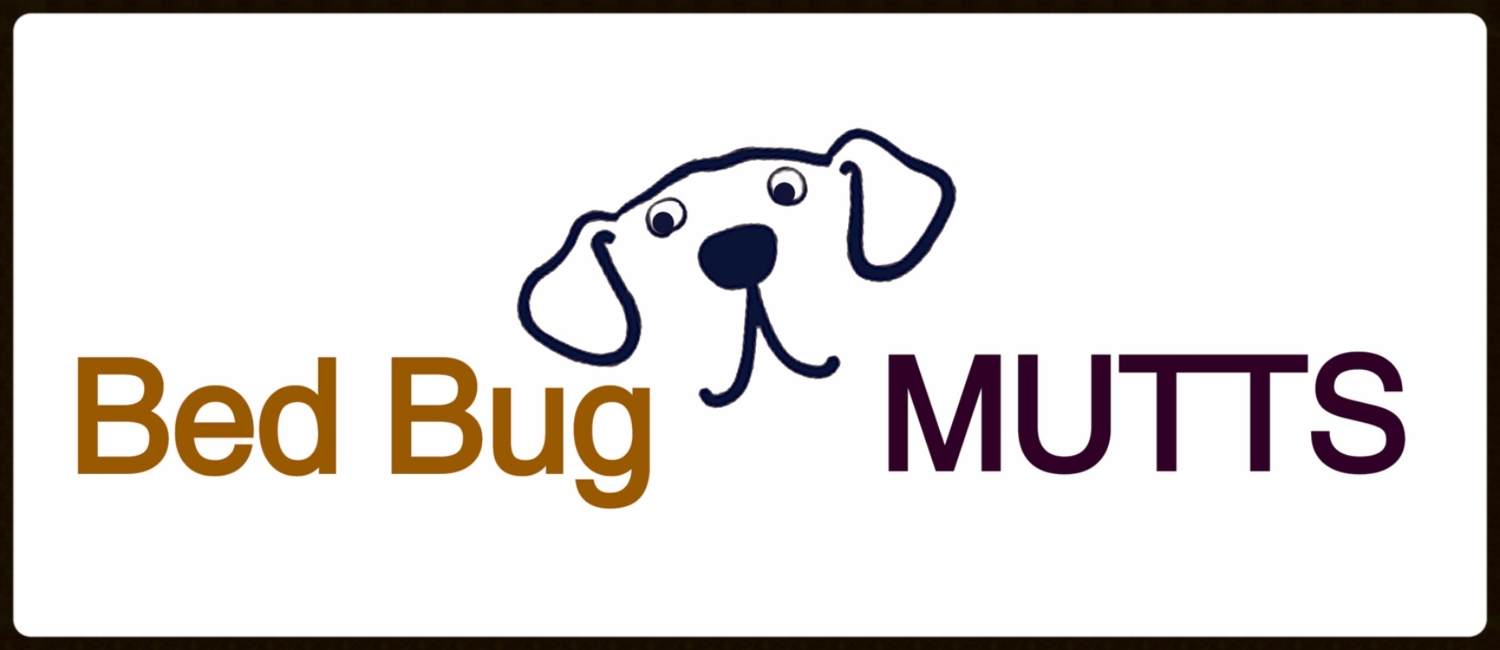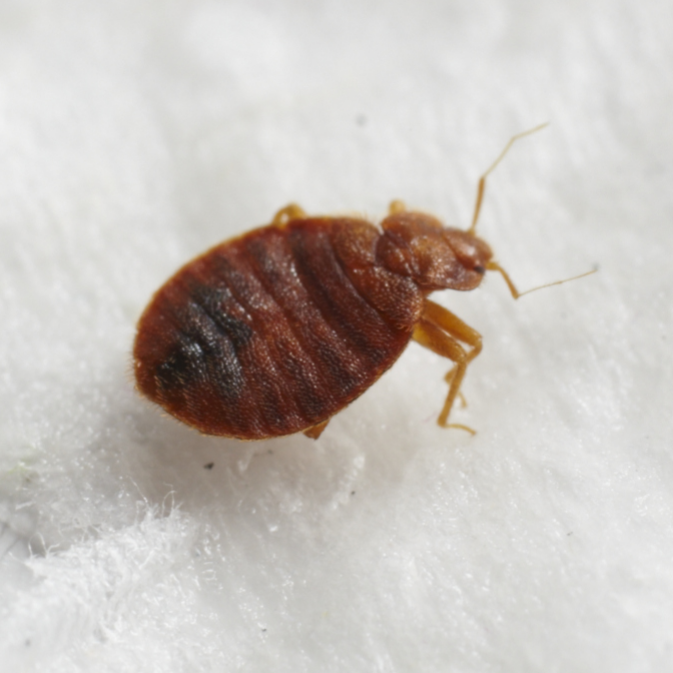
Female adult bed bug
With a little practice you can spot the difference between the male and female bed bugs; the female has a slightly rounded rear end.
Courtesy of anonymous www.Bedbugger.com forum poster
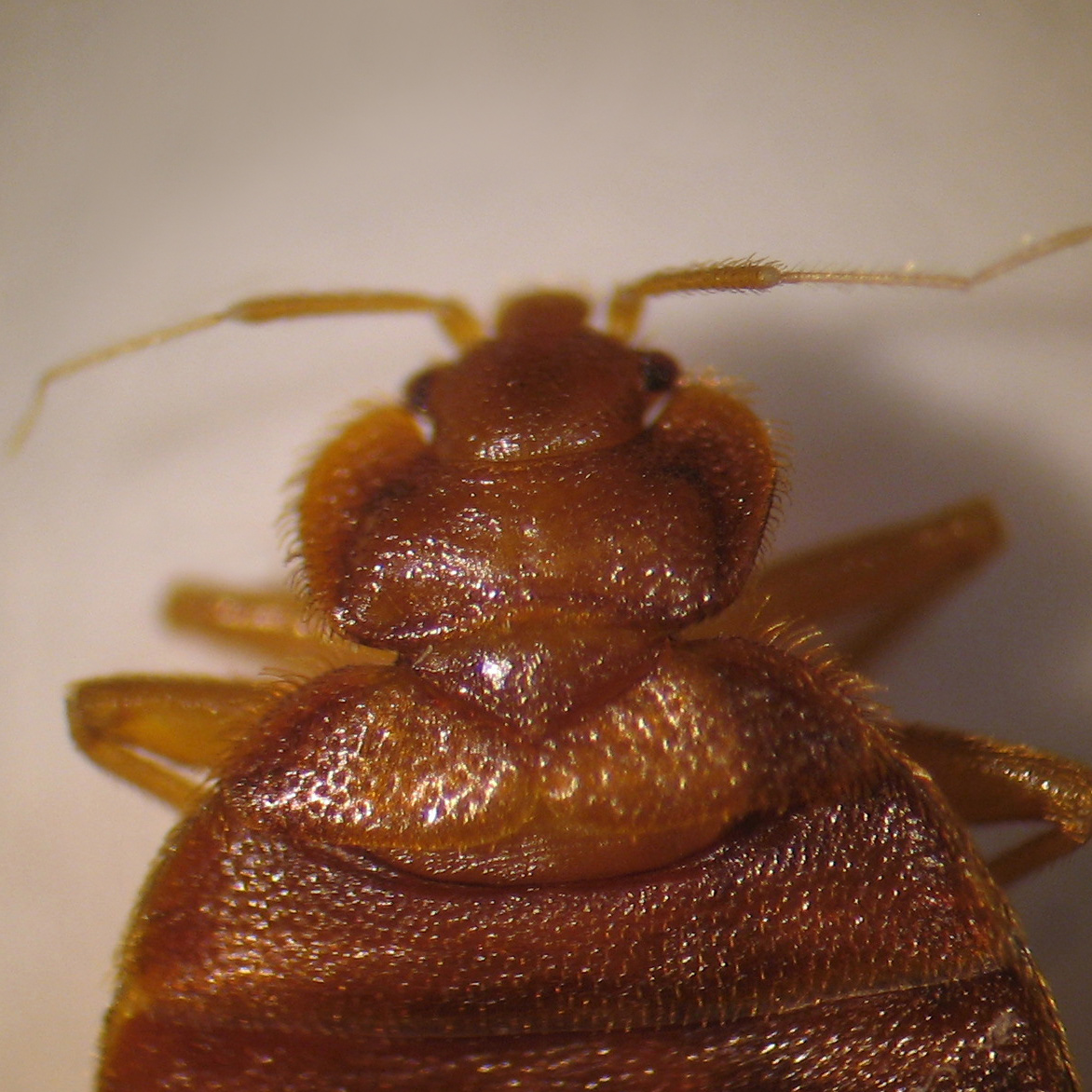
Dorsal View of Bed Bug Head Shot
Adult bed bugs are on average 5 mm long, oval-shaped and dorso-ventrally flattened. Like other members of the order, Hemiptera, they possess piercing-sucking mouthparts. Adults are brachypterous, which means that the hindwings are nearly absent, and the forewings are reduced to small, leathery pads.
Courtesy of CDC/ CDC-DPDx; Blaine Mathison/2010

Bed Bugs VS Apple Seeds
Male and female adult bed bugs in both unfed and fed conditions playing around their plant part look-a-likes, apple seeds. They can't tell the difference either and readily crawl over the apple seeds in a manner similar to what they do in their harborages. Both male and female bed bugs can have elongated abdomens after feeding. Males did not try to mate with the apple seeds. Any pale or dark waste droppings are from the bugs. Apple seeds don't move much at all, they have no legs. They are plump, but haven't fed. Blue line squares are 1/4 inch size. You must realize by now that I don't like to describe bed bugs as looking like apple seeds. Bed bugs look like bed bugs. It's important to familiarize yourself with good images of nymph and adult bed bugs, their waste material, and their shed skins to be able to properly identify unknown insects you may come across in your home or while on the road.
Notes and photo courtesy of Lou Sorkin
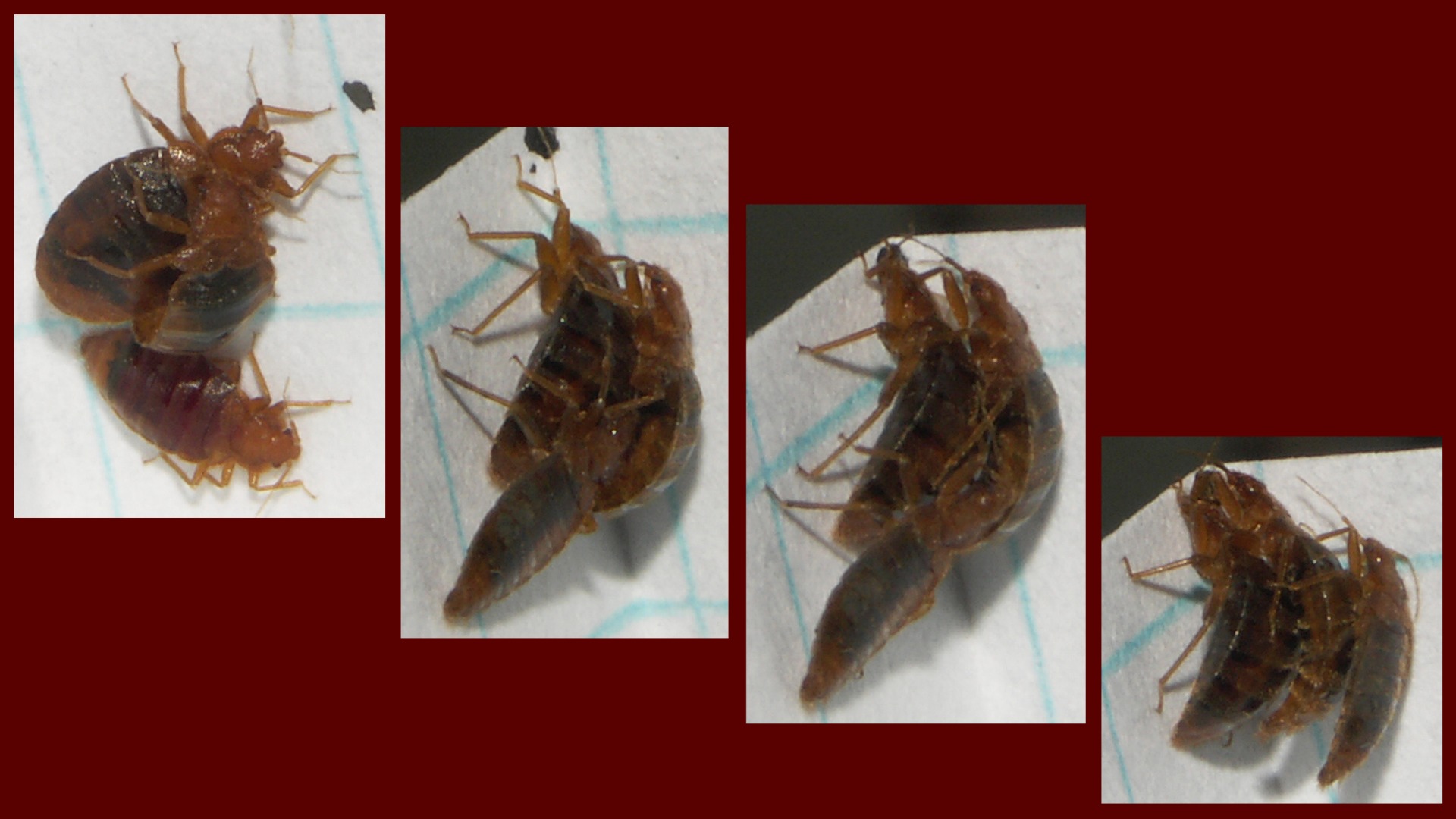
Traumatic Insemination
Start on the top left and view the sequence to the bottom right. Male & female mating with another male just hanging out below. The single male intrudes on the couple, pushing himself between them. Now no one is mating and soon after the threesome parted and all crawled away.
Photo courtesy of Lou Sorkin

Adult bed bug with 2 eggs and grains of rice
In this bed bug photo, there is one adult bed bug and two bed bug eggs. The grains of white rice provide relative scale for comparison. An adult bed bug is 5 to 7 mm in length (less than 1/4 of an inch) and the eggs - well, as you can see - very tiny indeed.
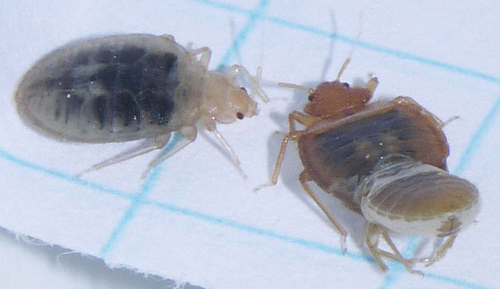
Bed bug cast skin beside bed bug
The bed bug on the right is in the process of shedding it's skin; it remains attached to its rear end. Bug on left recently molted. Notice it is paler, lighter coloration. Both bugs have blood from previous (5th instar nymph) stage still in their digestive tracts. Molting occurs when bug is physiologically ready. It doesn't have to totally digest its current blood meal first. Newly molted adult females may be able to produce eggs and mate before their first adult blood meal.
Scale: 1/4 inch squares. Photo courtesy of Lou Sorkin.
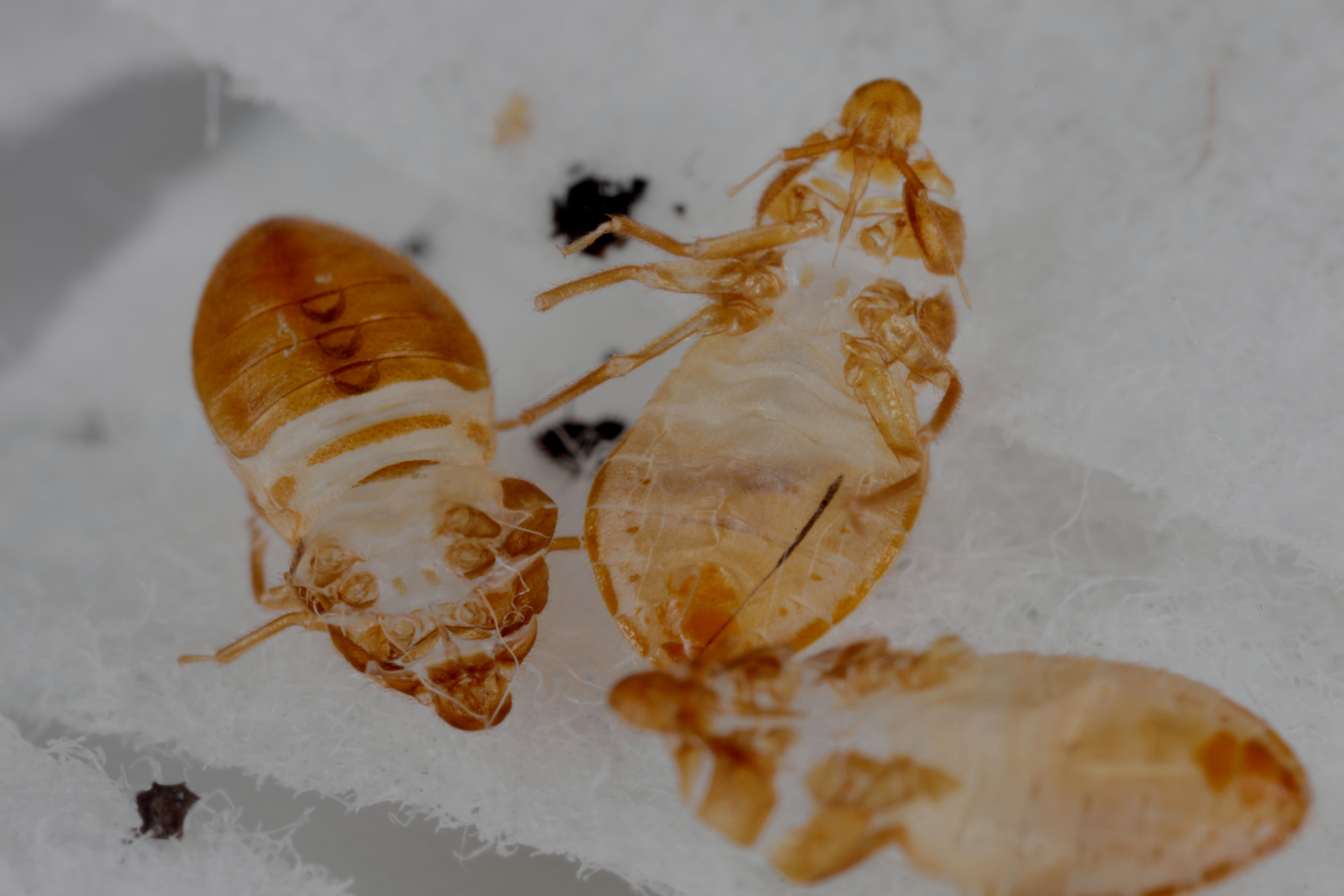
5th Instar Shed Skins
A dorsal, and 2 ventral views of the exuviae or shed skins of 5th instar bed bug nymphs. You can see the 3 dorsal scent gland areas on the middle of 3 dorsal abdominal sclerites in bug on left. You are looking into the bug: the thoracic sclerites split down the center and on head and the adult crawled out. The proboscis is evident as are 2 antennae of the bug on right. Contrast, brightness, gamma settings modified to enhance the sclerotized parts.
Note and photo courtesy of Lou Sorkin
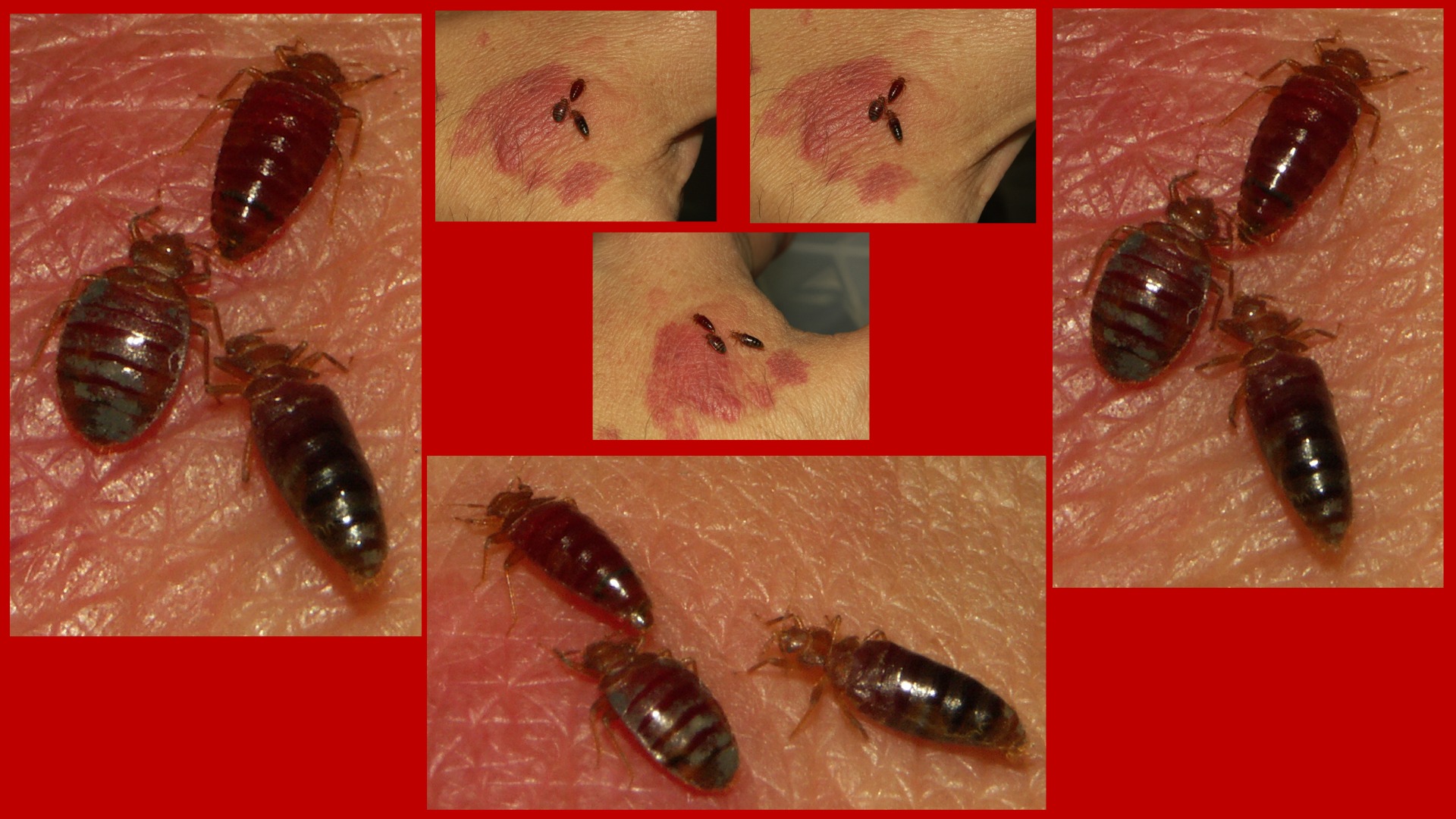
Views of 3 bed bugs as they feed. There are 2 females and one male. One female is easy to identify since it hasn't quite filled up, but the other 2 have become distended with blood and most people would call both males because they are elongate and not a typical roundish shape thought to be characteristic of a female bed bug body. Hint: the female terminalia is symmetrical, while that of the male is not. It is also easy to see the articulated wings on the thorax of one bug.
Photo courtesy of Lou Sorkin
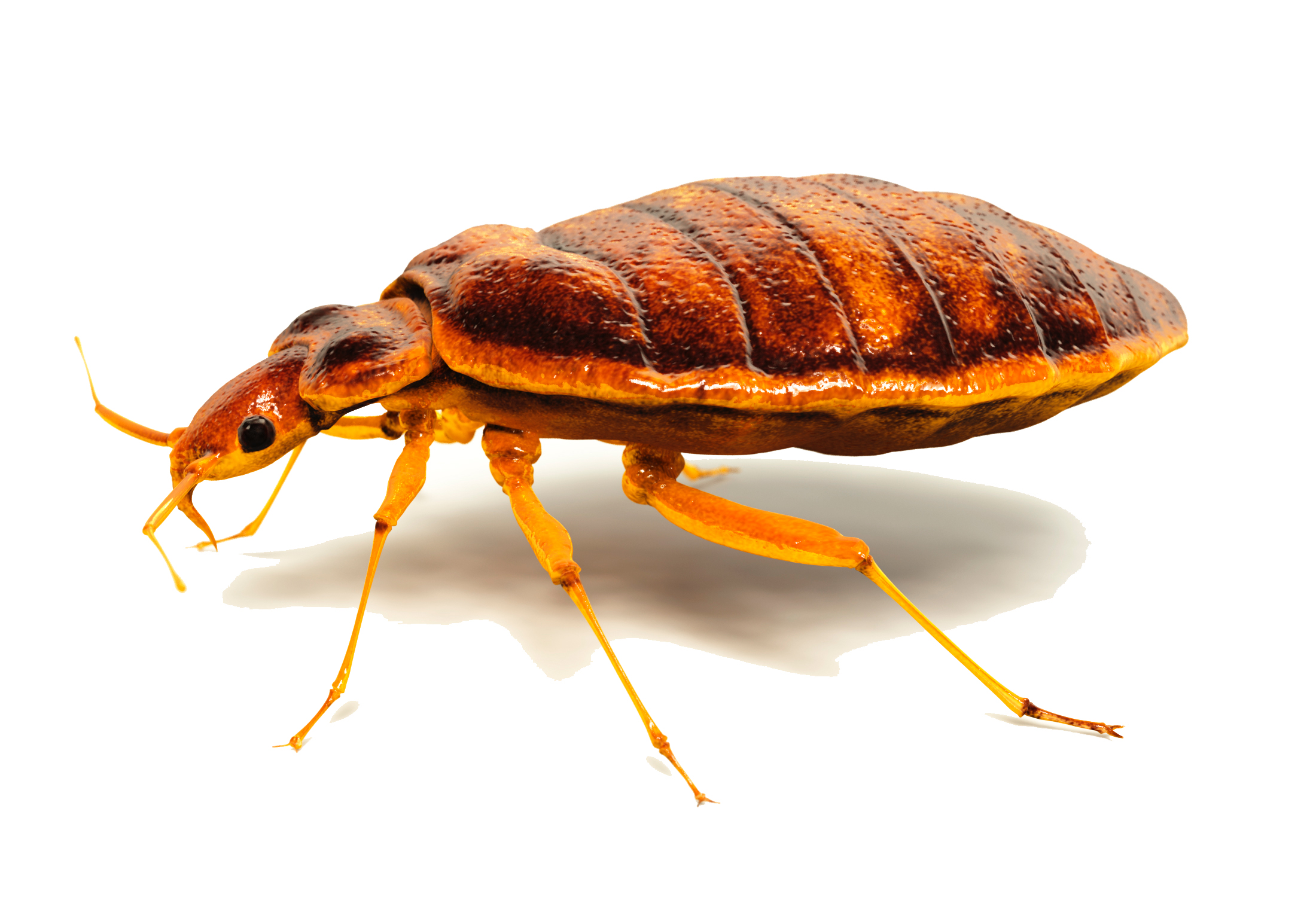
Bed Bug Side View
Detailed illustration of an adult bed bug.










